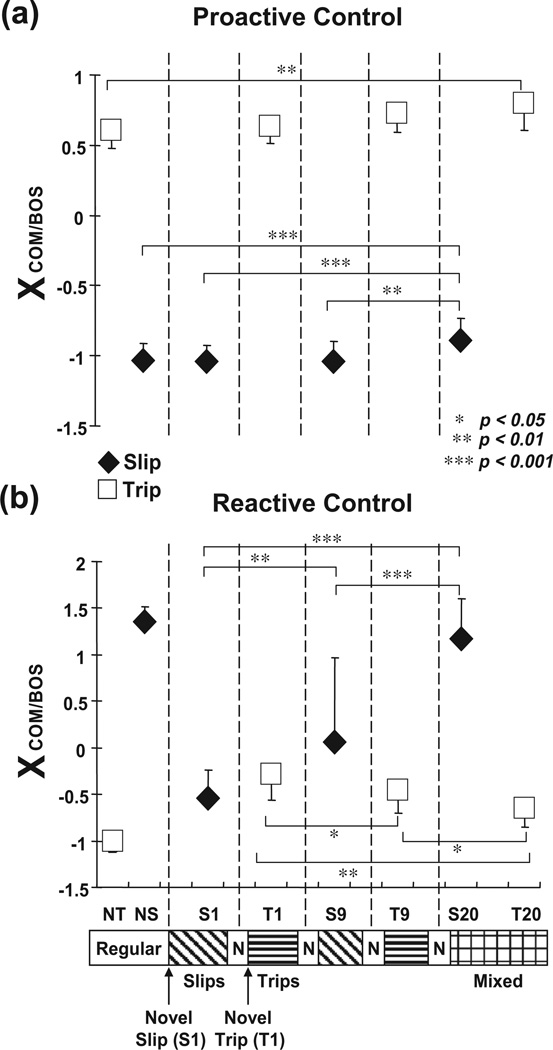Fig. 8.
Shown are group means (±SD) of adaptive changes in (a) pre-slip/trip COM position and (b) post-slip/trip COM position on selected trials of slips (S1, S9, S20) and trips (T1, T9, T20) for the training group. The COM position (XCOM/BOS) was defined as the absolute COM position in anteroposterior direction relative to the rear BOS and normalized by foot length. NS represented the data for the regular walking trial prior to the first novel perturbation (i.e., S1), and its pre- and post-slip data were obtained respectively at leading/ slipping foot (i.e., right foot) and left foot touchdown. NT represented the data for the regular walking trial prior to S1, and its pre- and post-trip data were obtained respectively at 30 ms prior to the time when the left toe marker was right above the erect plate and left foot touchdown. *p < 0.05; **p < 0.01; ***p < 0.001.

